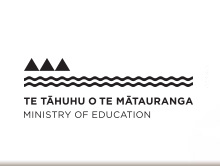I Muri i te Pānui Pukapuka
After Reading
Ka taea e te pouako te whakamahi i ēnei ngohe hei aromatawai, hei whakawhānui hoki i ngā pūkenga o ngā ākonga.
Possible assessment and extension activities.
Ākina ngā ākonga kia matapaki i te pātai nei: He aha ngā akoranga matua ka mau i a tātou mai i tēnei pukapuka?
Encourage the students to discuss this question: What are the main learnings we have learnt from this book?
Whakamahia ngā taitara o ia wāhanga, tuhia tāu ake kōrero, kia whakaatu ai ki te akomanga.
Using the heading from each chapter write your own thoughts and present these to the class.
He Hokinga Whakamuri hei Kōkiringa Whakamua
Ideas for Reflecting on Learning and Planning Next Learning Steps
Rangahaua ētahi atu āhuatanga o te whare tapere, pērā i te poutoti, i te mahi whai, me te mahi poi. Matapakia ngā ture, ngā tikanga, ngā tukanga hoki e pā ana ki ia mahi.
Research other aspects of the whare tapere, such as stilts, string games, poi. Discuss the rules, and processes related to each activity.
Ka uiui ia tauira i tōna koroua, i tōna kuia, i tētahi kaumātua rānei mō ngā mahi whakangahau i a ia e tipu ake ana. Kātahi ka whakaatu rātou i ngā pārongo mā te kōrero, mā te whakaaturanga ā-hiko rānei.
Students interview their koroua, kuia, or a elder about entertaining things they did when they were growing up. Then they present their information either as a speech, or a computer-assisted presentation.



